In part 1 of this blog, the focus was on the AC induction motor, which was key in Alternating Current. It was arguably Tesla’s single greatest invention. The next few inventions Tesla came up with would continue to change the world, including wireless energy. He also continued to run into obstacles that ultimately led to his doom.
After Battle of Currents
There was no question of Tesla’s brilliance after his invention of the AC motor, which won him and Westinghouse the battle of the currents over Edison. Westinghouse also won the rights to build the first power station to harness the power of Niagara Falls. As Tesla was on the verge of becoming filthy rich from the agreement he had with Westinghouse, something unexpected happened.
J.P Morgan, who once worked alongside Edison, attempted to take over Westinghouse’s company through stock manipulation. Morgan wanted to create a monopoly on electricity and so he needed to acquire Tesla’s patents that Westinghouse owned. Westinghouse lost a lot of money in battling Morgan in court, but he still owed a lot of money to Tesla.
He went to Tesla to discuss the contract. Westinghouse wanted to save his company. Since Westinghouse was the only guy who had believed in Tesla & treated him properly, Tesla decided to do Westinghouse a favor by ripping up the contract for money that Westinghouse owed him (PBS). If Tesla had truly wanted, he could have become one of the richest men in the world right then, but instead he decided to save Westinghouse’s company.
Tesla was back to square one once again with no money and his most successful patents gone. The one thing he still had remaining was his lab so he went right back to work.
Wireless Energy
Tesla next shifted his focus to wireless energy, which was considered impossible in the 1800’s. People began to wonder if Tesla had completely lost his mind. How could something work with no wires? How would one power it? Would it only work for short distances? Would it have any practical use moving forward or just be a cool toy? Wireless technology was completely unheard of, and this crazy engineer Tesla was claiming he would make it work.
There was some theoretical work in the 1870s by James Clerk Maxwell on the physics behind electromagnetism and electromagnetic radiation, but nothing practical was yet invented or thought of that could transfer energy in such a manner. That was where Tesla came into play.
In 1891, he created the first working Tesla coil, which could wirelessly transfer electricity through the air.
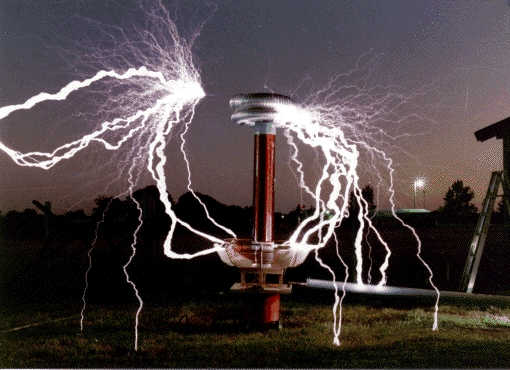
Photo by wiki / cc
Tesla coil is setup in following manner:
Power source (power socket) > transformer (upscales low voltage electricity into high-voltage electricity) > capacitor (stores electricity) > spark gap (creates the spark) > primary coil (generates magnetic field and transfers power to secondary coil) > secondary coil (generates electric current) > top load (shoots out current into the air like lightning bolts). (livescience, 2014)
A transformer, which converts low voltage electricity into high-voltage electricity, is attached to a power socket. The capacitor, which stores electricity like a battery, is attached to the transformer. A spark gap, which generates the electric spark, is attached to the capacitor. The capacitor, when it builds up enough energy, sends the spark of electricity to the spark gap. A pancake-shaped primary coil, which usually contains copper since copper is a powerful conductor of electricity, connects to the spark gap. A secondary coil, where the electric current is generated, connects to the primary coil. The secondary coil connects to the top load, which unleashes the current like lightning bolts.
What made Tesla Coil really cool was it could wirelessly power light bulbs with no wires attached. Tesla was successfully able to wirelessly light up light-bulbs almost 600 meters away using a large Tesla Coil (wiki)! It completely changed how people thought of electricity and essentially was the stepping stone to radio technology and television signals down the line along with other wireless technologies.
Following video shows a small tesla coil lighting up bulbs up to several feet away. Tesla wanted to build massive 100 feet tall Tesla coils for global power. Wardenclyffe Tower, a failed project which will be discussed below, was one of the massive Tesla Coils.
Radio Technology
In 1898, Tesla further built upon his wireless energy ideas, and he invented the first remote-control that used radio waves. He used his remote-control to control a four feet long RC boat he made (Turi, 2014). He showed off a primitive form of radio waves-powered controller with no wires being used to control the boat. The future implications for it were not yet understood at the time, but people thought it was magic.
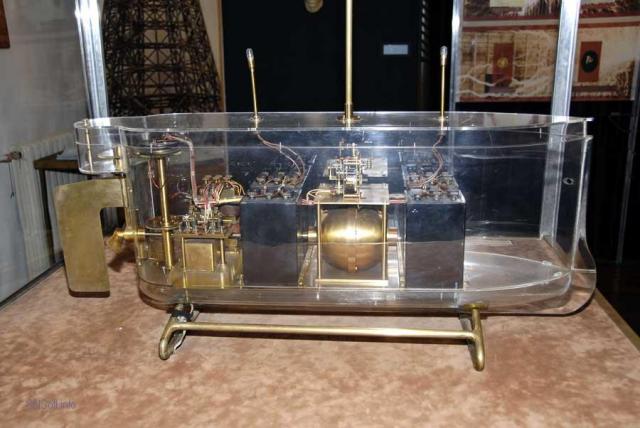
Tesla’s rc boat/Image by TeslaSociety
Tesla tried to sell his wireless energy idea to the US military, but they didn’t believe radio technology was of use in war (boy were they wrong!). Tesla was well ahead of his time. Another Spanish engineer used Tesla’s ideas to radio control a tricycle, engine-powered boat, and submarine torpedoes (Chandler, 2011). Eventually, Tesla coil was one of the ideas that led to the invention of radios.
The US government placed Thomas Edison on a Naval committee to come up with a way to detect German submarines (U-boats) in World War I. Tesla, who was not involved in the project, suggested radio waves could be used to detect enemy submarines underwater by bouncing signals off subs. The Naval board turned it down, saying the idea was impractical, which they were right about. Sonar was invented because radar is no use underwater (Knapp, 2012). Instead of bouncing radio waves, which radar does, one must use sonar, which bounces sound-waves. Radar is useful for detecting things above water while sonar is useful for detecting things underwater. One could still argue that Tesla was the first one to come up with the idea of radar for detecting distant objects almost 20 years before it was invented & patented by a British scientist in the mid-1930s (Tretkoff).
Tesla argued that machines, which we today call robots, could be built and wirelessly controlled using radio signals by humans to simplify the lives of humanity (PBS). A century later, we have such fully self-functional robots and are in process of getting more advanced.
Tesla felt the sun’s energy could be harnessed and used to power things back on Earth using antennas pointed at the sun. We have solar panels today that uses this ideas. He believed the weather could be controlled, machines can make war impossible through deterrence, and we can have instant global communication (PBS). These were truly mind-boggling ideas that nobody else had dreamed of becoming the norm. Tesla continued building his ideas up bigger and bigger to the shock of everyone around the world. This was Tesla at his finest.
Wardenclyffe Tower: Tesla’s Dream
Tesla, in his research, realized the earth was a giant conductor of electricity. To further build on his electricity ideas, Tesla realized the Earth could be used to transmit massive amounts of electricity wirelessly over vast distances. That was where his next idea was born.
Tesla had a vision to build a massive full size Tesla Coil that could revolutionize the ability to wirelessly send messages to any point on Earth. Tesla claimed it could also power up houses and buildings for vast distances by sending electricity in all directions through the air and ground. If you were to simply push a wire into the ground, it would be able to draw in electricity to power up houses. That would essentially be wireless power as Tesla saw it.
To put that into action, he went to JP Morgan, who was one of the richest man in America, to acquire a loan. Keep in mind that Morgan was the one who had indirectly ruined Tesla earlier, but Tesla didn’t have much of a choice in acquiring funding. Westinghouse had trusted Tesla, but JP Morgan had swindled Westinghouse to the point that Westinghouse couldn’t fund Tesla any longer. Morgan decided to fund Tesla’s project once he saw the promise it held for long-range communication. With the money, Tesla began work on the massive Wardenclyffe Tower.
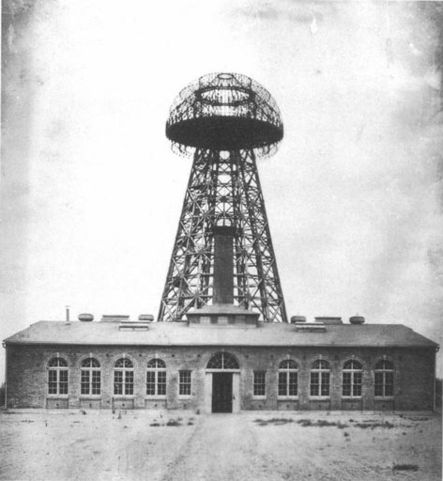
Photo by wiki / cc
Unfortunately, the funds were not enough to finish the tower so he went back to Morgan for another loan. When Morgan realized that Tesla’s idea may be used to provide wireless energy to people vast distances away, he realized he would not be able to charge people for energy. There would be no way to meter people on it.
Morgan had gone in thinking Tesla’s tower would only be used for communication, but Tesla had much bigger ideas that included communication and went beyond. If Tesla succeeded, it would ruin Morgan’s investments in energy across the nation – remember he spent millions in Edison’s DC and other energy investments in different sectors. AC had already defeated Edison’s DC with Tesla’s key invention, and Morgan couldn’t risk Tesla winning again with wireless energy.
To protect his own interests, Morgan cut Tesla loose before Tesla could finish the tower and possibly revolutionize his wireless energy idea. Tesla, once again, was screwed over and left to ruins by Morgan for the second time. Tesla was back to square one and was eventually forced to scrap the partially finished Wardenclyffe Tower with no funding. That was the end of wireless energy and the global communication idea Tesla had.
Tesla versus Marconi
To Tesla’s dismay, his radio patent was also given to Guglielmo Marconi, who was funded by J.P. Morgan, Edison and Andrew Carnegie, for successfully sending the letter ‘S’ across the Atlantic Ocean. Initially the court had ruled that it was Tesla’s patent, but in 1904 the patent office reversed its decision due to possibly political reasons and gave it to Marconi (PBS). Marconi became known as the ‘father of radio’ even though it used Tesla’s Tesla coil.
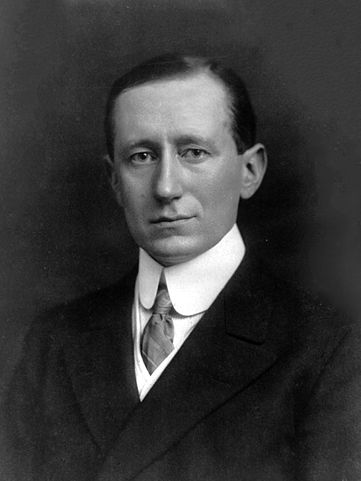
Guglielmo Marconi/Photo by wiki / cc
Tesla tried to argue in court that it was his idea from a decade before Marconi even sent the letter ‘S’, but to no avail. Marconi won the Nobel Peace prize in 1909 for the radio. Tesla tried to fight it, but simply did not have the financial resources to continue the lawsuit against the rich Marconi, who was also backed by wealthy bankers. Much later in the mid-1940s, the US Supreme Court reopened the patent case, looked at the facts presented, and ruled the patents were all along not Marconi’s (Briggs, 2011). Tesla was once again arguably the father of radio, but Marconi is still usually considered the father of radio. Unfortunately, Tesla was not alive when the Supreme Court made the ruling – Nikola Tesla had won again but posthumously. Once again, he had been indirectly screwed over by Edison and Morgan. For the third time.
Tesla in Later Years
Tesla went bankrupt around that time in the mid-1910’s, and nobody wanted to invest or fund his ideas. Marconi patent ruling, along with the Nobel Peace prize for the invention of radio going to Marconi and not being able to complete the Wardenclyffe Tower, led Tesla to a complete mental breakdown. Tesla would never again be the same. At this point he became eccentric and began to isolate himself from people, preferring to take care of wild pigeons. He claimed he could verbally communicate with pigeons (History, 2009).
He still continued with some of his other smaller inventions. For instance, he invented the first bladeless turbine engine (Harris, 2008) and an air-friction speedometer for cars (teslacollection). None if it were as great as AC induction motor or wireless energy.
He also designed a Vertical Take-Off and Land plane that could take off vertically like a helicopter but fly like a regular plane once in air (tesla patent). He lacked the funding to create a prototype in the early-1930s, but he still received the patent for it. The first fighter plane to use such an idea was the Hawker P.1127 in 1957 (Wiki). The Harrier, which was made in the late 1960’s, is the most famous of the VTOL’s still in use today.

Photo by wiki / cc
Tesla also came up with the idea of a weapon he called the “Death ray”, which was supposedly a charged particle cannon that could destroy things 200 miles away. He said he created one and successfully tested it in a lab (if he is to be believed). Unfortunately, no records exist today, and no blueprint was ever found. Tesla did say that in order to protect the idea from being stolen, he said he kept the blueprint in his mind – he had eidetic memory that allowed him to have almost photographic memory of things in his mind.
He tried to sell the idea to several countries including United States, Soviet Union, United Kingdom, and Yugoslavia. His grandiose goals were to use the Death Rays to create a system of deterrence, much like the nuclear bomb is today, to end war once and for all. He said “It will be possible to destroy anything approaching within 200 miles. My invention will provide a wall of power” (Tesla, 1937).
Tesla passed away in 1943 in his hotel room. He was discovered 2 days later by a maid. The FBI sent personnel from Office of Alien Property to take his notes and belongings. There are unsubstantiated rumors to this day that the FBI acquired documents on particle beam weapons and other ideas of Testa they made top-secret. FBI has publicly stated that the rumors are false, and released what they had concerning the Tesla papers almost 70 years later. Who knows if there was something else there or if it’s just nonsense paranoia?
Legacy of Tesla
Tesla had many ideas that nobody could comprehend or make sense of in his day. They laughed him off as a mad man or simply an unrealistic dreamer. Fortunately, he was right much more than he was wrong. His ideas were not as far-fetched as people believed in his day. Many of the ideas he thought of a 100 years ago are currently entire industries and technologies of today.
It is truly inspiring to see that every time Tesla fell to his knees after getting screwed over, he kept rising back up. If there’s one thing about Tesla to note, it is the fact that he was not a good businessman. His focus was on coming up with new ideas and innovation rather than making money and getting rich. I suspect he knew that he was not going to take money & riches with him to the grave – it is a concept that not many humans have truly understood throughout history.
Unfortunately, many of the people whom he worked with, such as Edison and J.P Morgan, were focused on making money so he was taken advantage of. Edison famously said “Anything that won’t sell, I don’t want to invent. Its sale is proof of utility, and utility is success.” That is not inspiring! Tesla coil didn’t make Tesla money, but it was a stepping stone towards something bigger and better in radios! That is something Edison would never understand.
Tesla also had many unrealistic ideas. For instance, he claimed that pumping small amounts of electricity into the brains of people can stimulate the minds; he suggested trying it in schools. Of course, he may or maybe not have been correct, but there is no way to test it out without actually doing it (I doubt any parent would okay it haha).
Tesla was wrong quite a few times. For example, he believed there was no such thing as electrons or subatomic particles. Electron microscopes ended that argument for good. He also believed in a mysterious ether, which Einstein ended up disproving with his theory of relativity not requiring such an ether.
Tesla also had battles over Einstein’s theory of relativity, which he questioned saying that matter cannot possibly curve empty space. Einstein obviously won that battle after actual observations in 1920 proving space & time does in fact curve due to mass. The bending of spacetime is what creates gravity at the most basic level. Tesla was not a physicist first and foremost so it would be unfair to judge Tesla based on his physics ideas, just like it would be unfair to judge Einstein as a mathematician or engineer rather than as a physicist.
Perhaps, Tesla was too far ahead of his time that it may have been detrimental to him from a funding and respect perspective. If one is seen as crazy, people often overlook them and refuse to risk investing in such individuals. Tesla’s ideas were often not considered seriously even after he transformed the world in the 1880s. That limited his funding and therefore ultimately limited how many ideas he could put into action and/or research further. He was essentially on his own without money to hire assistants or others to work with him.
Conclusion
Every once in a while, individuals come along that are bigger than life with mind-blowing ideas. Nikola Tesla was such an individual. He was not always correct or the most sane, but there is no question that he was a genius who transformed humanity. Before he was anything, he was a visionary, a pioneer and a dreamer who made many of his dreams a reality. His AC induction motor especially was one of the greatest inventions in history. He is the sort of person who inspires us and who we learn much from. To instill creativity, to bring hope to people and to revolutionize humanity.
What did we learn from Tesla? We learned that imagination has no bounds, and you must keep going no matter the circumstances. Ideas speak louder than anything. Tesla will not be forgotten anytime soon, for he was a man of legends and myths. Elon Musk’s company Tesla carries on the dreams and hopes that Nikola Tesla had of electricity powering the world but lacked the resources to carry out.
- My Favorite Books - February 7, 2024
- Review of Carl Sagan’s The Demon-Haunted World - January 31, 2024
- The 75 Greatest Films of All Time - December 22, 2023

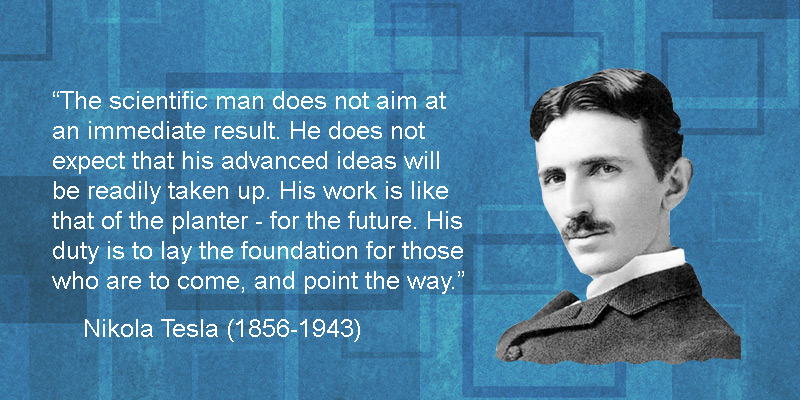


I’ve recently started a blog, the info you provide on this site has helped me greatly. Thanks for all of your time & work. “A physicist is an atom’s way of knowing about atoms.” by George Wald.